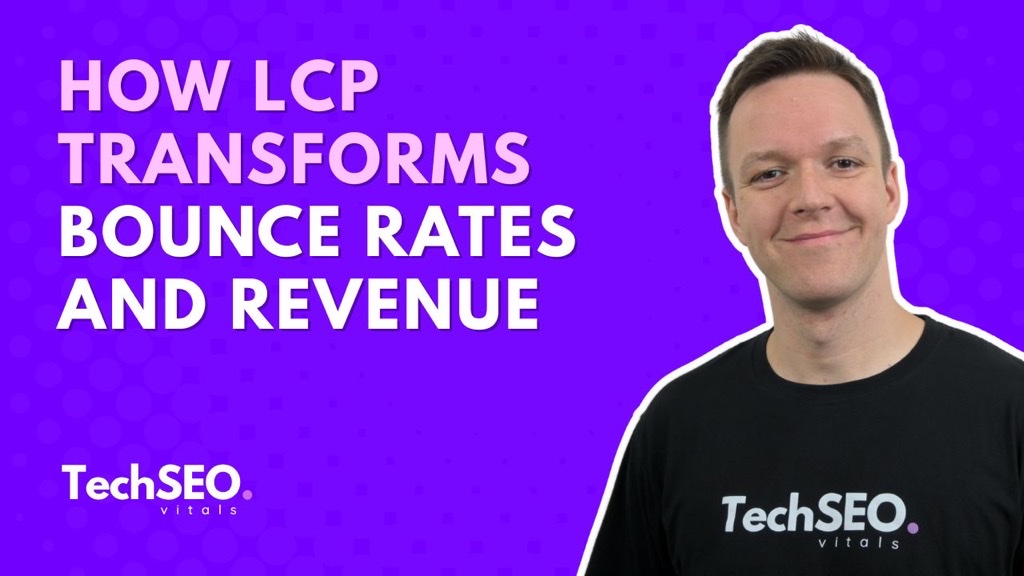The ROI of Faster Content: How LCP Transforms Bounce Rates and Revenue
Optimizing LCP reduces bounce rates by 14% and boosts conversions by 13%. Unlock the ROI of faster content loading for business growth.

Optimizing LCP reduces bounce rates by 14% and boosts conversions by 13%. Unlock the ROI of faster content loading for business growth.

A website with slow-loading content can drive customers away out of frustration. A one-second improvement in Largest Contentful Paint (LCP) can cut bounce rates up to 14% and boost conversion rates by 13%.
For businesses getting thousands of monthly visitors, optimizing LCP isn’t just technical adjustment; it’s a revenue growth strategy that delivers immediate ROI and creates a decisive advantage over competitors.
When businesses invest thousands in marketing campaigns but couldn’t get expected revenue turnout, it often follows a similar pattern; slow loading websites. When the page’s largest content element loads too slow, users can quickly lose patience and leave before the website can even present the valuable contents.
Over 53% of mobile users abandon sites that take longer than 3 seconds to load, meaning sluggish LCP performance directly translates to wasted advertising budget and lost sales opportunities. Google incorporates LCP as one of the ranking factors, so poor LCP performance will always undermine SEO efforts.
The statistics say it clearly. Bounce rate probability increases by 113% as page load time increases from 1 to 7 seconds. Every second represents a potential risk to business. For websites that are driving hundreds and thousands of visitors through ads and search results, losing customers due to slow content can be a harmful mistake for the business.
Largest Contentful Paint (LCP) is a Core Web Vitals’ metric that measures the rendering time of the largest image, video element, or text block that are visible at the above-the-fold of the website.
Google’s benchmarks define a LCP score below 2.5 seconds as good performance, but I recommend targeting 1-1.5 seconds for better results. A fast LCP shows visitors that you respect their time, while slow loading creates the opposite impression.
Site speed research shows that websites loading within approximately 1 second achieve 2.5 times higher conversion rates compared to those requiring 5 seconds. The biggest factors affecting LCP include excessive resources such as CSS, JavaScript, media files, or external scripts that provide very little value, and poor code quality.
Optimizing LCP delivers significant benefits. Typically, bounce rate reduces by 10-30% once LCP reaches the optimal range. Lower bounce rates, in turn, translates to 5-15% conversion increase on average.
For businesses with over 100,000 monthly visitors, even smallest improvements create a substantial impact. If conversion rates increase from 2% to 2.2%, that translates to 200 additional conversions monthly. With an average order value of $100, this represents $20,000 in additional monthly revenue.
Just from a straightforward ROI calculation, this scenario could deliver a 760% first-year ROI, even with the implementation cost of $25,000. Moreover, you can also gain competitive positioning advantages and improved SEO rankings.
Renault’s transformation is proof that LCP improvements translate into business gains. The automotive brand analyzed 10 million visits across 33 countries and discovered strong correlations between LCP performance and conversion rates.
Their technical approach included server-side rendering, aggressive CDN caching, and code-splitting to reduce JavaScript loads. They optimized images using next-generation formats (WebP, AVIF) and streamlined third-party tracking tags.
The results showed significant improvements. Renault quantified that 1 second LCP improvement generated 14 percentage points lower bounce rates and 13% higher conversion rates without additional advertising investment.
The following is a three-step approach to optimizing LCP in order to minimize load time.
(Feel free to refer it to your development team to optimize these changes)
Start by optimizing minimal development resources:
Optimize Images and Media: Compress and resize images without visible quality loss. Use modern formats like WebP or AVIF, which are 25-40% smaller than traditional formats. Implement responsive images with srcset for mobile users.
Preload the hero image usingand never lazy-load above-the-fold images.
Optimize Fonts: Preload key fonts in the
section using. Use font-display: swap to avoid text rendering delays.Defer Non-Critical Scripts: Use async or defer on non-essential scripts like analytics, chat widgets, and tag managers. Load these after the main content is painted to prevent blocking.
Phase 1 changes can yield from 20-30% LCP reductions, often producing immediate decreases in bounce rates.
Address structural issues that require developer resources:
Optimize CSS: Reduce render-blocking CSS by inlining critical CSS for above-the-fold content and deferring the rest. Minify and compress all CSS files with gzip or brotli.
Advanced JavaScript Optimization: Remove unnecessary JavaScript and implement code-splitting to load only essential components initially.
Use server-side rendering (SSR) when possible: SSR can positively impact LCP performance as well as crawlability and the odds of appearing in the results of AI tools.
Optimize Server Response: Focus on Time to First Byte (TTFB) improvements through efficient caching, database optimization, and CDN implementation. TTFB typically represents a significant portion of the overall LCP.
Continuous monitoring of Core Web Vitals: breaking positive user experience with a single commit or image change is extremely easy, making accidental performance breaks common. Thus, weekly or daily monitoring is crucial for maintaining optimized performance.
Establish real-user monitoring systems: rather than relying solely on lab data from tools like Google PageSpeed Insights, what really matters is real-user monitoring data through tools like DebugBear or Google’s CrUX Dashboard, though the latter only collects Chrome user data.
Define clear KPIs: such as “Maintain LCP under 2.5 seconds (ideally under 1.5s) for 75% of users” and configure automated audits in CI/CD pipelines to catch regressions before deployment.
Start with performance benchmarking. Use Google’s PageSpeed Insights to measure current LCP performance on critical pages for both mobile and desktop users. Identify pages where LCP exceeds 2.5 seconds and bounce rates remain high.
Understanding LCP’s four components helps you focus optimization efforts effectively:
Focus on immediate fixes. Address Phase 1 opportunities: compress large images, enable CDN services, and remove render-blocking elements. Many businesses discover significant improvements within weeks of focused effort.
Develop your optimization roadmap. Create a 3-month plan with assigned resources and specific targets such as “LCP under 1.5 seconds on mobile for our top 5 pages.” Involve cross-functional teams where marketers identify priority pages while developers estimate implementation effort.
Establish monitoring frameworks. Create dashboards for monitoring LCP, bounce rate, and conversion rate in real-time. Schedule monthly check-ins to review metrics and maintain accountability across teams.
In summary, LCP optimization is a direct pathway from technical performance to business results. The evidence is compelling: faster content loading reduces bounce rates, increases conversions, and creates measurable revenue improvements.
For businesses attracting significant monthly traffic, the ROI potential is substantial. Even the slightest conversion rate increase translates to additional customers and remarkable revenue growth. The competitive advantage of fast-loading content extends beyond immediate conversions. It also enhances user satisfaction and improves SEO rankings as well.

Technical SEO & Web Performance Consultant
With 10+ years building and optimizing websites, I've learned that technical excellence drives business success. I help companies maximize their website's potential through strategic technical SEO and performance improvements that create better experiences for users and stronger results for businesses.
Get actionable strategies that help business owners and developers create exceptional user experiences, optimize technical SEO and performance, and drive revenue growth.



No spam, ever. Unsubscribe at any time.
By subscribing, I agree to the Privacy Policy and Terms and Conditions.
Get Free Technical SEO & Web Performance Tips